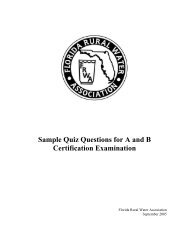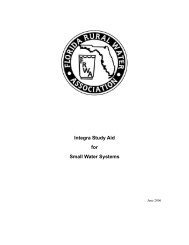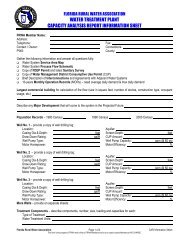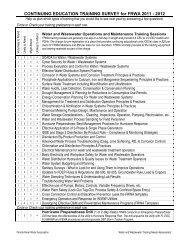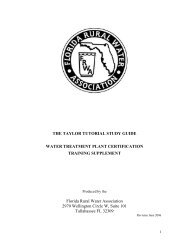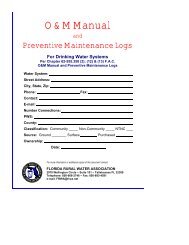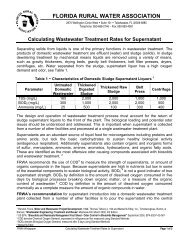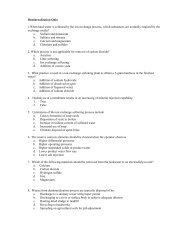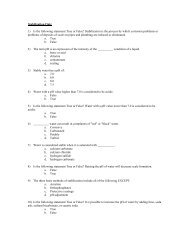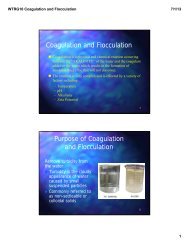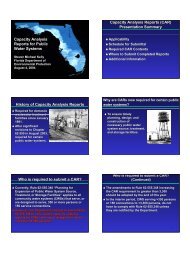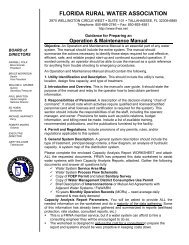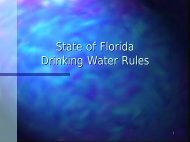1 Production of Chloramines and Chloramine ... - Save the Water
1 Production of Chloramines and Chloramine ... - Save the Water
1 Production of Chloramines and Chloramine ... - Save the Water
You also want an ePaper? Increase the reach of your titles
YUMPU automatically turns print PDFs into web optimized ePapers that Google loves.
Monochloramine ORP in mV for Clean <strong>Water</strong><br />
Monochloramine ORP mV<br />
in Pure <strong>Water</strong> mg/l<br />
Tap <strong>Water</strong> no Cl2 350<br />
0.2 375<br />
0.4 410<br />
0.6 440<br />
0.8 445<br />
1.0 450<br />
1.5 460<br />
2.5 480<br />
3.0 490<br />
4.0 500<br />
Note: Careful use <strong>of</strong> a portable ORP device is necessary since readings can easily fluctuate<br />
by 25 mV. See manufacture’s recommendations for proper use.<br />
As can be observed, <strong>the</strong> higher values <strong>of</strong> monochloramine produces elevated ORP values<br />
near 500 mV which can effectively inactivate microbes with longer detention times than<br />
that needed with free chlorine. The stability <strong>of</strong> <strong>the</strong> oxidation state in a water system will<br />
depend on <strong>the</strong> concentration <strong>of</strong> pollutants or reducers in <strong>the</strong> finished water. When high<br />
concentrations <strong>of</strong> monchloramine is added bacterial inhibition will occur as long as a<br />
highly oxic state exists. If organic material is available <strong>the</strong> monochloramine will be<br />
destroyed as shown by <strong>the</strong> equations in <strong>the</strong> previous section. Thus high oxidation states<br />
(high mV) are indicative <strong>of</strong> an environment where nitrification <strong>and</strong> rapid degradation <strong>of</strong><br />
chloramine is highly unlikely to occur. Where oxidation potentials are low or dropping,<br />
conditions are present that favor nitrification or nitrification may already be occurring.<br />
Thus <strong>the</strong>se relationships provide a quantitative method for determining <strong>the</strong> state <strong>of</strong> <strong>the</strong><br />
oxidation reactions <strong>and</strong> <strong>the</strong> trend toward undesirable low concentrations <strong>of</strong> disinfectants<br />
that are occurring in a water distribution system at any point in time. ORP is thus an<br />
indicator <strong>of</strong> <strong>the</strong> status <strong>of</strong> chlroramine degradation at any point in time. This allows<br />
operators to predict <strong>the</strong> rate <strong>of</strong> chloramine degradation <strong>and</strong> take steps needed to prevent<br />
fur<strong>the</strong>r ORP reductions that will favor nitrification.<br />
The following table shows <strong>the</strong> various chemical constituents <strong>and</strong> how <strong>the</strong>y describe <strong>the</strong><br />
stability <strong>of</strong> <strong>the</strong> chloramine that is present in a water system.<br />
12



